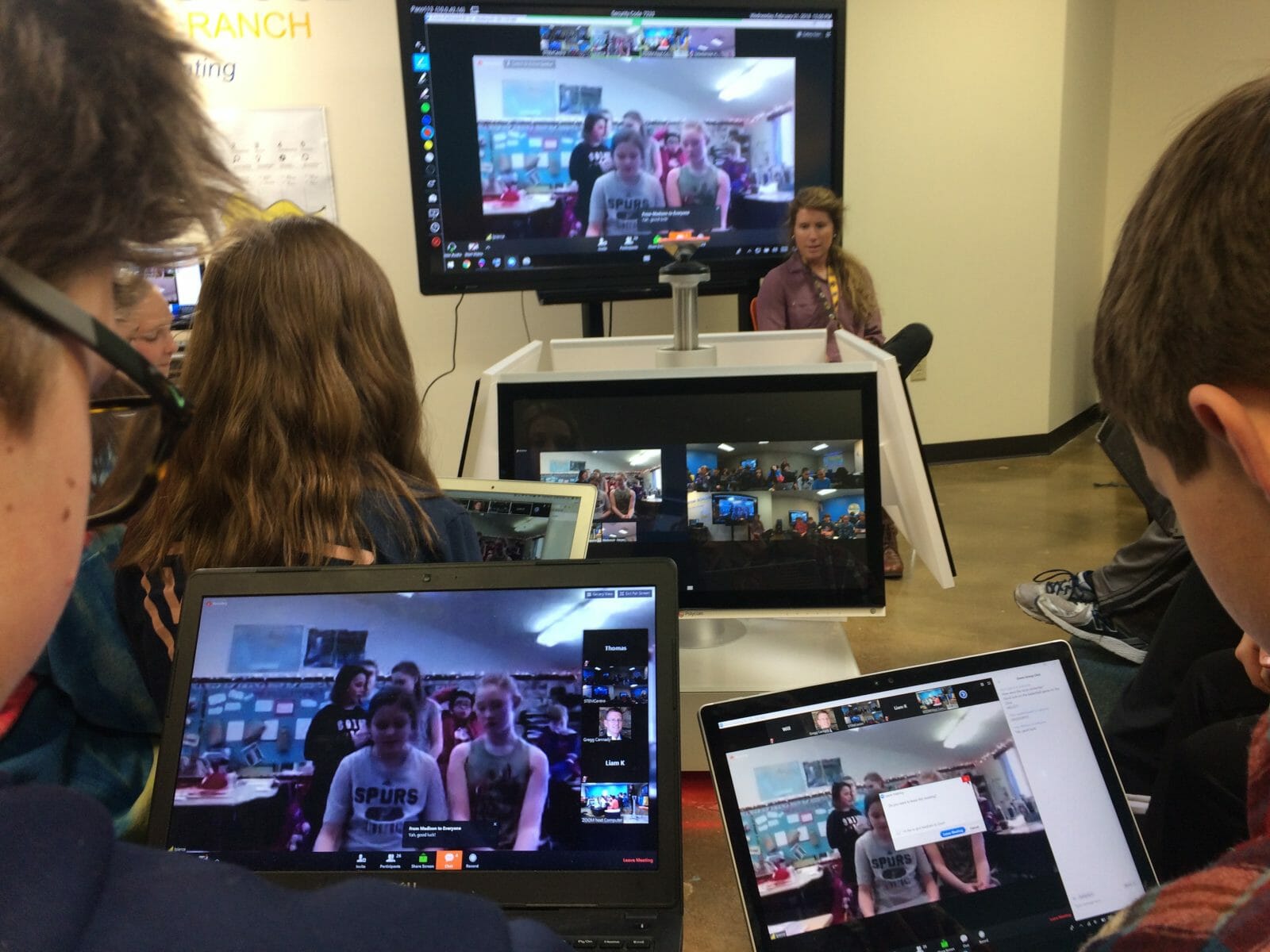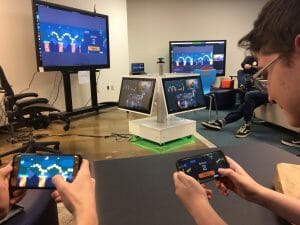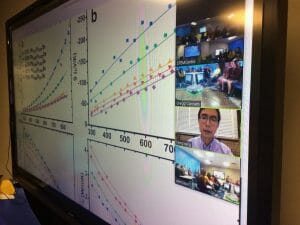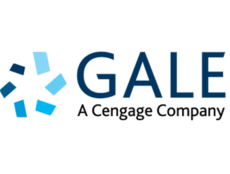
Editor’s Picks
The Future of Synchronous Learning: A Look Inside Dr. Gregg Cannady’s Classroom
By Henry Kronk
March 19, 2018
Most instances of remote and even synchronous learning involve basic content delivery. Students can’t make it to class or campus, so they do the next best thing. They watch recorded lectures, make their way through learning modules, and occasionally videoconference or message their instructor and peers. But that’s not how Dr. Gregg Cannady sees it.
Cannady teaches at the Highlands Ranch STEM School, a public charter school in the suburbs of Denver. Over the past few years, Cannady has pursued a singular goal: connecting his students with as many industry leaders, experts, educators, and other classrooms as possible. Highlands Ranch learners do this all from their own campus.
With the use of videoconferencing software and devices, Cannady has become something of a synchronous learning evangelist.
“Synchronous learning technology allows for engaged learning where students solve problems in real time with other students, [people in other] industries, higher ed, and anyone else,” Cannady said.
The Advantages of Synchronous Learning
“[I]n addition to [the work of] those like Carl Wieman at Stanford, there is a mountain of evidence [suggesting] that active, experiential learning works while content delivery does not. If we are talking about REAL learning, it must be student driven and the teacher becomes the facilitator of students with infinite potential who have access to infinite content.”
“Developing a collaborative network that supports real-world innovation and equal access for all children is urgently needed.”

The synchronous learning classroom at Highlands Ranch, known as the SYNK, consists of a smartboard, numerous monitors, a projector, a 360° degree camera and video display from Polycom, audio equipment, and mics that can pick up speech from anyone in the room. For software, Cannady uses Zoom videoconferencing along with the Pano app from Polycom.
Yes, that’s a lot of hardware. Highlands Ranch has benefited from some generous donations in that regard. But at the same time, Cannady stresses that he’s doing his best to explore the potential of technology currently available. Many other schools participate in synchronous learning with Highlands Ranch students and make do with significantly less.
“We also have scaled our research to a rural Mexican class which uses a donated laptop, a webcam on a stick, old speakers, a projector on a bare wall and all in a room with no windows or air-conditioning. [Other partners’] room systems range from $1,000 to $3,000 in cost.”
“The SYNK is a lab for what is possible and how can this technology be used more effectively.”
There’s More to the Digital Divide than Meets the Eye
One fruitful connection allowed by the SYNK has been the connection between rural and urban classes. Cannady has facilitated collaborative learning between his classes and those in Arickaree, CO, a rural district where he grew up.
“Urban students are more likely to be exposed to diverse industries, teachers with advanced degrees and training, and resources that represent an innovative world where the design process [timeline] has gone from years to, in some cases, 24 hours. The world is moving fast and our students need to the tools and connections that enable them to live on the edge.”
“Rural students have as much or more potential to thrive in a high tech world. Simply connecting them to opportunities opens doors of possibilities that they can easily walk through. These rural students know how to work and are in many cases more eager to learn than urban youth.”
“Rural teachers and schools worry that they are not qualified, can’t find experts in technology, etc. The truth is that even the most qualified, highly trained teacher cannot keep up with the design process and available content. If teachers know how to find experts and connect, they become facilitators.”
It’s Easier than You Think
But that’s hardly the beginning of what the SYNK has allowed. Synchronous learning is more than possible with a limited budget. “We host classes in grades K-12 and almost every subject. [We’ve connected with] schools in Alaska, Mexico, Kansas, [along with] experts in everything from Mercy Corps to physics.”
While Cannady has proven that it doesn’t take much to connect two classrooms, he recognizes that not all educators share his zeal. “I hear excuses: “No Time!” “Not part of my curriculum” etc. It’s true, teachers are swamped and required to do many things that take up their energy and time. We all decide how to spend our time and money. Can we shift our priorities so that teachers have more time and support to innovate? I hope so.”
Cannady likes to emphasize that partnerships with innovative companies and the tech industry should be a key component of any K-12 education. But at the same time, that partnership needs to occur with good faith on both sides.

“I would LOVE to see industry and come together to find scaffolded solutions in which industry understands that they must work together when it comes to education. Unlike teleconferencing in high-budget companies, ZOOM, SHARP, Polycom, Cisco, Aver etc. should spend less time competing for our money and instead collaborate with us so that anyone can find a solution without having to buy the Cadillac. It’s good to know what the Cadillac is. Our world needs to understand that ALL students need these connections, especially those in underserved or poverty stricken areas.”
“Of course it’s not just the responsibility of telecommunication companies. Policy, industries seeking well trained work force, higher education . . . we all should prioritize student learning. We spend so much on things that have less impact. Why not learning! In the long run, we will profit financially and socially.”
The Time Has Come to Fly Outside the Flock
As a final thought Cannady highlights how the education system is largely broken in the U.S. and one of its biggest problems is that doesn’t sufficiently support teachers.
“Although I’ve always felt that my strength is teaching, I’ve mostly been embarrassed to be a teacher. Teachers don’t get rich, are not supported as well as other career fields. NOW – I know teaching is the most noble profession. Our work with students puts us on the front lines with young people who are the hope for the future.”
“Take a look at the most recent brain research.”
“We should spend more time and money on these young brains. Imagine what would happen if we invested in five year olds. Watch out world!”
“EVERYONE MUST support teachers so that they can find the best approach, skill and content. Everyone in the world should be on the team.”









No Comments